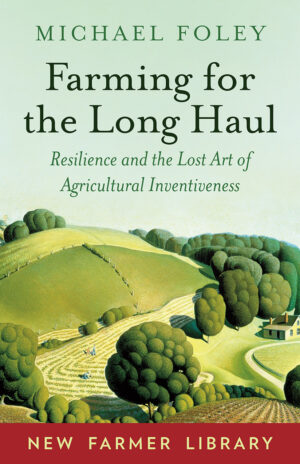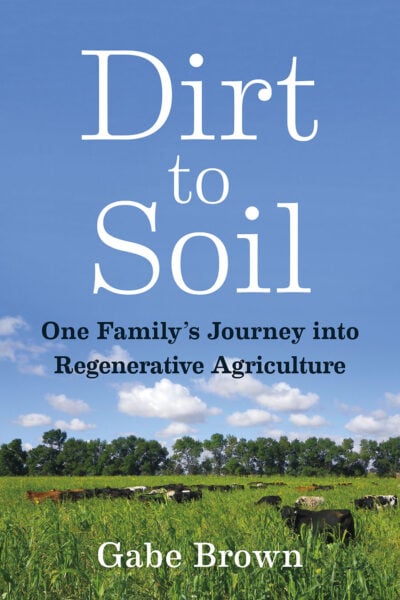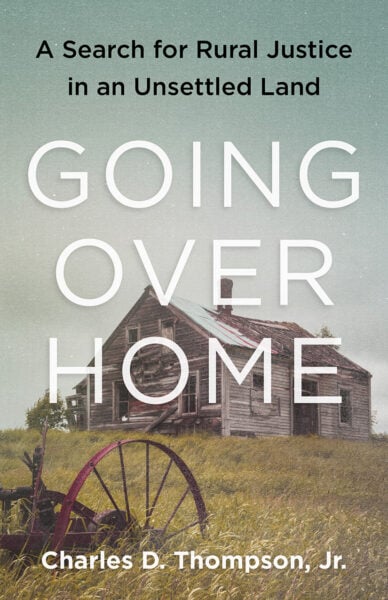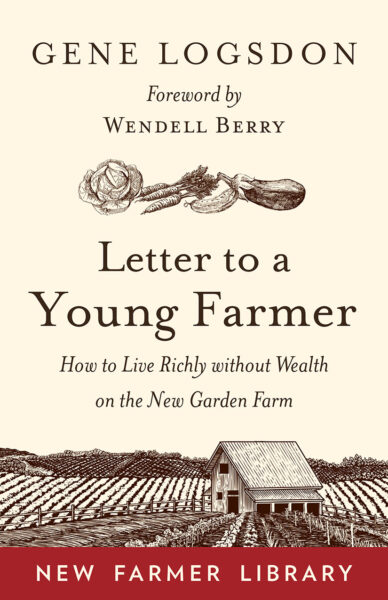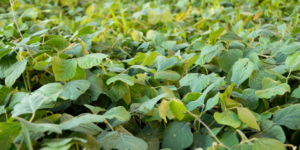Who Are We as Farmers?
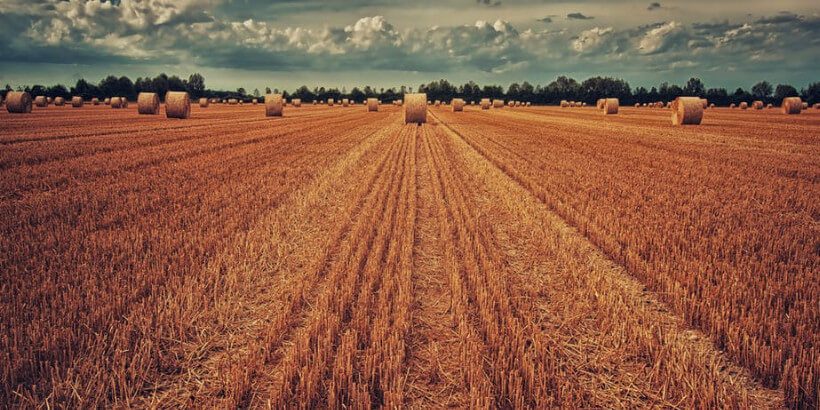
Recently, farmers have been making the headlines because of the hardships they’re facing to sustain their farms. With larger, corporate farms running smaller, privately-owned farms out of business, it seems like many farmers are fighting an uphill battle. But, despite the small amount of money, long hours, and constant threats from the “big guys” farmers are powering through with determination because what they do is more than a job or obligation–it’s a way of life.
The following is an excerpt from Farming for the Long Haul by Michael Foley. It has been adapted for the web.
Prefer audio?
Listen to the following excerpt from the audiobook of Farming for the Long Haul.
Farming is a vocation, Wendell Berry insists, not a job. Starting there is already a step toward resilience, because it means we recognize that we are in this for the long haul and that it will take a great deal to drive us out. I knew farmers in southern Maryland who clung so desperately to farming that they carried on even when it made no money and little sense, renting land so they could run tractors on it and plant, spray, and harvest corn and soy on weekends while the rest of their lives were taken up with the nine-to-five jobs that paid the bills. Only the Commodity Credit Corporation kept their hobby from bankruptcy. To one degree or another most farmers in the country are like those farmers. And even those who farm more sustainably and with less reliance on government handouts do so out of their dedication to farming as a vocation.
Farmers, moreover, may or may not have much of the entrepreneur in them, but even if they do it is not the mentality of the entrepreneur whose happiness is building a company, no matter what its product, and squeezing a profit out of it. No, a farmer builds a farm for the sheer pleasure of working the land and working with animals. The business of farming may or may not be of interest to farmers, as much as it has to be attended to in any case. Farming is not first of all a business, as our business advisers like to insist. It is a way of living. Either it satisfies a passion in us, a deep need, or we will pretty quickly give it up.
Those facts guarantee a sort of personal resilience, but they don’t guarantee that anyone with the requisite passion will be able to continue to farm. Nor do they guarantee that the style of farming adopted will be one that has a future. Those outcomes depend on skills and attitudes and strategies that will be the topic of further chapters.
We can learn a lot about ourselves and the tasks we face by recognizing that we farm because we love to. What that means concretely will vary from farmer to farmer. But any open discussion among farmers reveals some near constants: a passion for nurturing animal and plant life; a love of working outdoors; an appreciation for the mysteries of nature; a commitment to feeding people; a talent for troubleshooting; a fierce independence. Each of these tells us something about how farmers go about their work as opposed to, say, engineers or manufacturers. We nourish, we don’t make. Even as plant or animal breeders, we bow to the mysteries and the intransigence of nature. We shape our environment, but if we are wise we don’t overturn it. We depend upon nature and natural processes and must work with them. We are multifaceted doers, as capable of rigging an irrigation system as managing a thousand transplants or moving a herd of goats. And we want to do it ourselves, even as we recognize the need to work cooperatively with others. These generalities may apply more to small, alternative farmers than to midwestern corn and soy farmers, but to one degree or another they likely apply to all.
These characteristics in themselves add up to a lot of farm resilience. And that resilience explains how many farmers and their farms survive year after year, even under the present, very unfavorable circumstances. It takes very bad advice, and very bad investments, to put a farm under. That fact speaks to the enormity of the bad advice that has been doled out to farmers over the last century.
The following attempts to correct that bad advice, not with new advice about how to farm, what to grow, or how to market it—there is plenty of good advice out there on such topics—but with strategies for farming in both hard times and good, in market economies and outside them, and reflections on the social context for farming well and over the long haul.
What Will the Long Haul Look Like?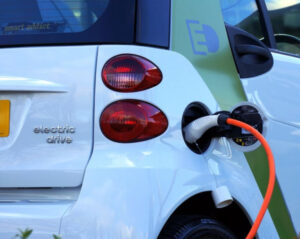
The chances that the next fifty years will not bring enormous, not to say cataclysmic, disruptions to our way of life are nil. World oil reserves will be exhausted in as little as fifty years. Ditto natural gas. As will the lithium that powers today’s most sophisticated batteries. As this suggests, transportation is equally imperiled. If the world doubled the number of electric vehicles on the roads every year, it would take until 2035 to surpass the total number of gas guzzlers on US highways alone; currently electric vehicles—and projected storage for intermittent renewable energy generally—depend on lithium batteries. There is no current production line for electric pickups, tractor-trailers, heavy equipment, or farm tractors. And for those who still imagine that the electric tractor will replace gas- and diesel-fueled versions, another, more dire limitation arises: At current rates of erosion, the world’s topsoil will be gone in sixty years. In short, the largescale agricultural and food delivery system as we know it has at most a few decades before it exhausts itself and the planet with it. Only radical innovation can make possible production on a scale that could hope to feed the world’s population.
Climate change poses still more disturbing possibilities. We could halt all greenhouse gas emissions today and climate change would continue to accelerate. Sea levels are already rising; the Arctic ice cap is evanescent in the summer and thinning each winter. The Antarctic glaciers are calving at an alarming rate. And exposed permafrost is already emitting methane gas, a far more potent greenhouse gas than CO2, increasing warming trends no matter what the signatories of the Paris Agreement do or don’t do. Coastal flooding is already producing climate refugees, as are the drought and drought-exacerbated wars of Africa and the Middle East. And devastating storms like Katrina in 2005, and Harvey and Maria in 2017, are becoming more frequent.
Disruption will affect different regions and corners of the world differently, but we will all be affected. In the United States the arid West and the wet Northwest are both expected to become significantly more hot and dry. The Midwest and Northeast are already experiencing warmer, wetter weather, with severe storm events increasing. Catastrophic flooding like that experienced in Houston, Bangladesh, and India in 2017 is likely to increase in coastal zones and elsewhere, and heat waves across the world are becoming hotter. Food production is likely to be affected more profoundly than other economic activities. Farmers will be called upon to produce under increasingly adverse environmental conditions with less and less access to the sort of inputs that made the twentieth century’s surge in food production and population possible. And they will have to produce with more and more limited access to markets, with greater transportation costs, and in the face of rapidly rising demand as conventional world production slumps or is cut off. Markets for local food may flourish, so long as local communities are flourishing. But the end of the oil economy, combined with the economic impacts of climate change, will result in fewer and fewer opportunities to flourish beyond the local market for any but the most ruthless speculators.
None of this should be controversial, and most of it has been predicted for decades. As the Club of Rome pointed out in 1972, we live in a world of limits, and sooner or later those limits will rise up to bite any civilization that insists otherwise. Of all people, farmers should recognize the dilemma posed by the limits that nature sets us, however often the agricultural experts and agribusiness suppliers insist there is no end in sight. As the Greenhorns have put it, “We face a dystopian future, with guaranteed-unpredictable weather, the impending collapse of the fossil fuel economy, endlessly consolidating monopolies, and a country that is, for the first time in our history, majority urban.”Over the next decades we will be farming “at the end of the world,” that is, the world as we have known it, the world that virtually every institution in our society continues to regard as the only guide to our future. That it isn’t and shouldn’t be our guide is the premise of this book.
Recommended Reads
The Original Organic Pioneer – An Interview With Eliot Coleman
Recent Articles
Everyone loves a refreshing, fermented, nutritious drink…even your garden! Take your fermentation skills out of the kitchen and into the garden by brewing fermented plant juice. The following is an excerpt from The Regenerative Grower’s Guide to Garden Amendments by Nigel Palmer. It has been adapted for the web. How to Make Fermented Plant Juice Fermented…
Read MoreWant to see your crops thrive this upcoming growing season? The key is in soil fertility and health. Spend time maintaining your soil’s health to guarantee bigger and better crops come harvest time! The following is an excerpt from No-Till Intensive Vegetable Culture by Bryan O’Hara. It has been adapted for the web. What Is Soil Fertility?…
Read MoreMany know the effects of catnip on our feline friends, but few realize that catnip has medicinal effects for humans. From stomach aches to reducing fevers, catnip is a versatile herb with many benefits. The next time you grow this plant for your cat you may end up taking a few cuttings for yourself! The…
Read MoreIt’s time to take control of your seeds and become a plant breeder! Saving your seed allows you to grow and best traditional & regional varieties, and develop more of your own. The following excerpt is from Breed Your Own Vegetable Varieties by Carol Deppe. It has been adapted for the web. Becoming A Plant…
Read MoreTrying to figure out how to manage weeds in your garden beds? Use cover crops and living mulches for weed suppression while your garden flourishes! The following is an excerpt from The Ecological Farm by Helen Atthowe. It has been adapted for the web. Suppressing Weeds With Cover Crops: Getting Started Cover crops suppress weeds…
Read More

